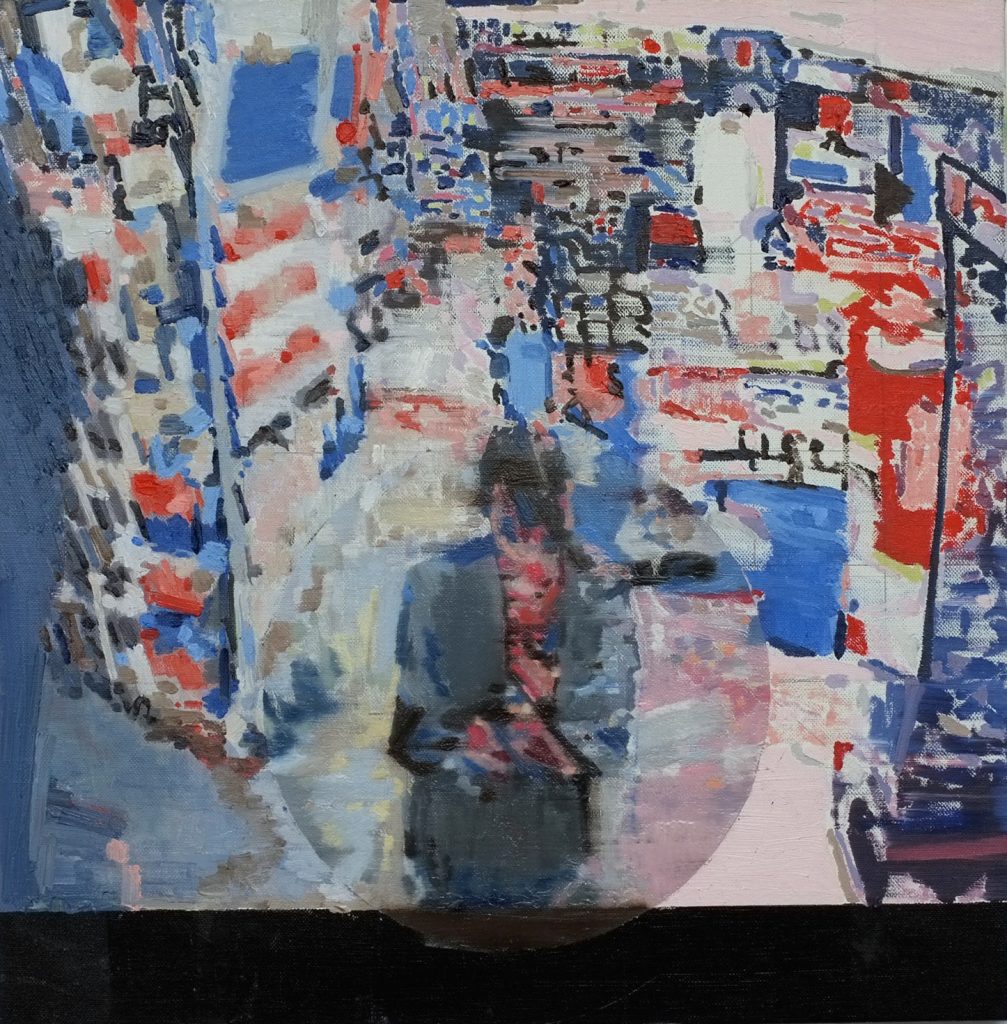Summary
Image capture and storage through closed-circuit TV (CCTV) has become commonplace since the latter decades of the 20th century, and nowhere more so than in cities. It is perhaps tolerated as a 'necessary evil' not only because of increased security concerns but because of individuals' own fevered image capture and sharing through smartphones and social media. While phones and drones may have usurped CCTV in terms of heightened anxiety around voyeurism and loss of privacy, the ubiquity of CCTV still symbolises a world in which paranoid security and bullish surveillance prevail at a cultural level, with the technology so regularly recording our everyday movements.
The screen, both in and of itself as well as in its mediating capacity, is a recurring motif in Melbourne-based, British-born artist Steven Rendall's paintings, and his consideration is anything but reductive in unpicking the technology and its relationship to representation and contemporary culture. Both a generator and collector of images, Rendall has snapped countless photographs of CCTVs and their footage on his iPhone, using these photographs in a painting practice that explores modes and effects of representation and the questions that these raise.
Three of his works held in the Art and Heritage Collection all turn on the conceit of CCTV as a form of image-making in relation to the discipline of painting. An image within an image, each painting adopts the position of the of the CCTV camera, with the high angle distorting the figures and interior spaces while giving the illusion of commanding bird's-eye vision. The gestural brushstrokes with which Rendall builds these pictures of pictures demonstrates the ephemeral nature of CCTV images, their degraded quality signalling their generally low value and eventual expendability. There is thus an inherent contradiction in the CCTV image, imperative yet expendable. In '9 (Detail)', the pictorial space fractures through pixilation, making clarity impossible; in 'The Shape on the Left …' the murky mauve hue leeches not only the colour but the reality of the scene depicted; and in 'Circle' the circular highlight targets its subject like a bunny in the headlights, but the visual quality gives away little detail. While these paintings point to the capacity of visual technologies to shape contemporary urban existence and the occupation of public space, they also subtly suggest the provisional nature of their raison d'être.
